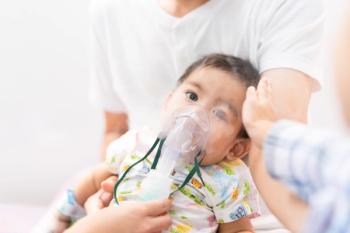
- Vol 38 No 2
- Volume 38
- Issue 02
Pediatric update on antibiotic use
It is more important than ever for health care professionals to remember that overprescribing these drugs can have life-threatening consequences.
According to Mark R. Schleiss, MD, a professor of pediatrics at the University of Minnesota Medical School in Minneapolis, some clinicians tend to overprescribe antibiotics for children, both in inpatient and outpatient settings, for a range of viral ailments.
“I am alarmed about the overprescribing of antibiotics, and clearly the pandemic has thrown gasoline on this fire,” he said.
The overprescription of antibiotics can have life-threatening consequences, including the emergence of Clostridioides difficile infection and severe allergic and anaphylactic reactions to antibiotics.1
“The biggest issue, however, is that antibiotic overuse promotes emergence of antibiotic-resistant strains of bacteria that can cause disease, particularly in children with underlying health issues, and we are left—quite literally—with no available therapies to help these children,” Schleiss noted.
A recent policy statement from the American Academy of Pediatrics (AAP) points to growing evidence that antibiotic stewardship programs can reduce antibiotic overuse and still improve patient outcomes.2
“I strongly support the AAP statement,” Schleiss said. “We must recognize, though, that overprescription of antibiotics in children is a multifaceted problem; other stakeholders, including our colleagues in internal medicine, public health, and the pharmaceutical industry, must work together to find solutions.”
Schleiss noted there are efforts to develop new antibiotics for bacterial infection, due to the fact that bacteria is so resistant to antibiotics. “However, we must acknowledge that administration of new antibiotics is no substitute for being more judicious with antibiotic use in general,” he said.
The therapeutic use of bacteriophages—small viruslike structures that can destroy bacterial pathogens—represents a highly innovative antibacterial intervention that might someday obviate the need for traditional antibiotics, Schleiss said.3
In addition, research into the human microbiome and strategies aimed at restoration of these “normal” bacteria help fight infection by limiting the emergence of pathogenic organisms.4
“We also know that annual influenza vaccination can reduce unnecessary antibiotic use, but uptake of this vaccine among children remains low,” Schleiss said. “As [coronavirus disease 2019] immunizations work their way into pediatric use, use of this vaccine is predicted to ameliorate overprescription of antibiotics.”
Ateev Mehrotra, MD, MPH, an associate professor of health care policy and medicine at Harvard Medical School in Boston, Massachusetts, said the pandemic has definitely reduced antibiotic prescribing in children. “However, we are still reviewing the data to see the full effect,” he said.
The most fundamental change that Mehrotra’s data and other data indicate is a dramatic decrease in the number of children becoming sick due to acute respiratory illnesses.5 “With all the pandemic precautions, schools have been shut down and kids are staying home, therefore significantly reducing transmission,” Mehrotra said. “This is important because acute respiratory illnesses account for the vast majority of antibiotics for children.”
Mehrotra said it is hard to predict if the decrease in antibiotic prescribing will persist once the pandemic subsides. “Only time will tell,” he said. “But if there is any take-home message from the pandemic, it is that we must be very careful with our predictions because they are often dead wrong.”
One potential scenario is that once children start returning to school on a consistent basis and become sick, the antibiotic prescribing rate will return to prepandemic levels. “Unfortunately, the previous decrease will have been just a little blip on the horizon for trends in overall antibiotic prescribing,” Mehrotra said.
Additionally, telemedicine visits versus in-person visits for the same condition can result in higher antibiotic prescribing, due to heightened physician uncertainty about whether the patient has a bacterial illness. “A better safe than sorry strategy kicks in,” Mehrotra said.
However, a second possibility, borne out by some of Mehrotra’s research, is a long-term reduction in antibiotic use because many children who become ill during the pandemic recover on their own, so going forward parents may think twice about making an office appointment.
References
1. Spigaglia P, Mastrantonio P, Barbanti F. Antibiotic resistances of Clostridium difficile. Adv Exp Med Biol. 2018;1050:137-159. doi:10.1007/978-3-319-72799-8_9
2. Gerber JS, Jackson MA, Tamma PD, Zaoutis TE. Antibiotic stewardship in pediatrics. Pediatrics. 2020;147(1):e2020040295. doi:10.1542/peds.2020-040295
3. Rastogi V, Pragya, Navneet Verma, et al. An overview on bacteriophages: a natural nanostructured antibacterial agent. Curr Drug Deliv. 2018;15(1):3-20. doi:10.2174/1567201813666160406115744
4. Brinkac L, Voorhies A, Gomez A, Nelson KE. The threat of antimicrobial resistance on the human microbiome. Microb Ecol. 2017;74(4):1001-1008. doi:10.1007/s00248-017-0985-z
5. Dhochak N, Singhal T, Kabra SK, Lodha R. Pathophysiology of COVID-19: Why children fare better than adults? Indian J Pediatr. 2020;87(7):537-546. doi:10.1007/s12098-020-03322-y
Articles in this issue
almost 5 years ago
At last, a silver liningalmost 5 years ago
Racism in pediatric health: How to talk to children about racismalmost 5 years ago
Six-year-old male with acute eye swelling and drainagealmost 5 years ago
The perfect storm: Influenza and RSV during the season of COVID-19almost 5 years ago
Teenage boy with asymptomatic brown plaque on back of thighalmost 5 years ago
High CMV viral load at birth is tied to hearing lossNewsletter
Access practical, evidence-based guidance to support better care for our youngest patients. Join our email list for the latest clinical updates.









